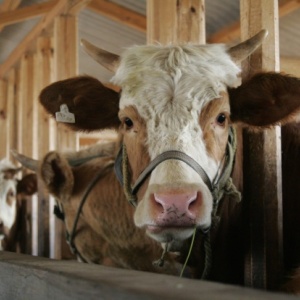
This new paper published in Nature Climate Change, assesses the mitigation potentials achievable through improved livestock management practices and moderating meat consumption. It estimates that livestock-oriented measures could account for up to half of the mitigation potential of the global agricultural, forestry and land-use sectors but emphasises that the gap between technical potential and social and economic feasibility is likely to be large.
The paper’s (copied) conclusions are as follows:
Discussion
The mitigation potential of the livestock sector could represent up to 50% of the global mitigation potential of the agriculture, forestry and land-use sector. This is significant, but most of this potential has yet to be realized, due to low adoption rates of technical practices and uncertainties and trade-offs associated with attempts to reduce the consumption of livestock products. At the same time, establishing the societal impacts of land-sparing opportunities, in terms of livelihoods, employment, economics, gender and equity, is essential for understanding their feasibility. This area needs to receive urgent attention due to its policy relevance.
There is also a need to increase investment in the livestock sector in the developing world so that it becomes more market-oriented. This could catalyse the adoption of practices for sustainably intensifying the sector in addition to mitigating emissions. Understanding the interactions at global and local scales between mitigation and adaptation in livestock systems will also be essential for identifying the practices that create the largest synergies and reduce the trade-offs between these goals.
The continuing trend of increasing global consumption of meat is not compatible with reducing GHG emissions from agriculture. There is a need for research to understand what types of knowledge or interventions could limit the global growth in livestock consumption without threatening the food security or nutritional outcomes of people in developing countries. Public health policies offer one opportunity for moderating the overconsumption of livestock products by the growing middle classes that would be likely to have beneficial effects on both health and climate change mitigation. On the other hand, the world food system has never had to react to planned, voluntary reductions in food consumption, so very few policy alternatives to reduce consumption equitably have been designed or tested.
Limiting the rise in emissions from the livestock sector is challenging. There are opportunities for simultaneously increasing productivity and decreasing emissions intensity, but these run the risk of successful farmers expanding production, thus limiting the benefits in terms of total emissions. Thus addressing leakage and rebound impacts with the livestock sectors, and between the livestock and other sectors, will be essential. Reducing the global consumption of livestock products would bring considerable benefits in terms of lower agricultural emissions, but much more research is needed on how this could be achieved without negative trade-offs in some parts of the livestock sector.
Abstract
The livestock sector supports about 1.3 billion producers and retailers, and contributes 40–50% of agricultural GDP. We estimated that between 1995 and 2005, the livestock sector was responsible for greenhouse gas emissions of 5.6–7.5 GtCO2e yr−1. Livestock accounts for up to half of the technical mitigation potential of the agriculture, forestry and land-use sectors, through management options that sustainably intensify livestock production, promote carbon sequestration in rangelands and reduce emissions from manures, and through reductions in the demand for livestock products. The economic potential of these management alternatives is less than 10% of what is technically possible because of adoption constraints, costs and numerous trade-offs. The mitigation potential of reductions in livestock product consumption is large, but their economic potential is unknown at present. More research and investment are needed to increase the affordability and adoption of mitigation practices, to moderate consumption of livestock products where appropriate, and to avoid negative impacts on livelihoods, economic activities and the environment.
Citation
Herrero, M.,Hnderson, B., Havlík, P., Thornton, P. K., Conant, R. T., Smith, P., Wirsenius, S., Hristov, A. N., Gerber, P. Gill, M., Butterbach-Bahl, K., Valin, H., Garnett, T., Stehfest, E., (2016). Greenhouse gas mitigation potentials in the livestock sector, Nature Climate Change doi:10.1038/nclimate2925
You can find the full study here and see further coverage here. There is also a press-release from CSIRO here.
See also Mario Herrero’s blog on The Conversation: To reduce greenhouse gases from cows and sheep, we need to look at the big picture.
Read more in the research library category Primary production agriculture, Climate change: mitigation, Animal issues and in the keyword categories GHG impacts and mitigation, Livestock, Livestock systems, Grazing and land-use and Animal feed.












Post a new comment »